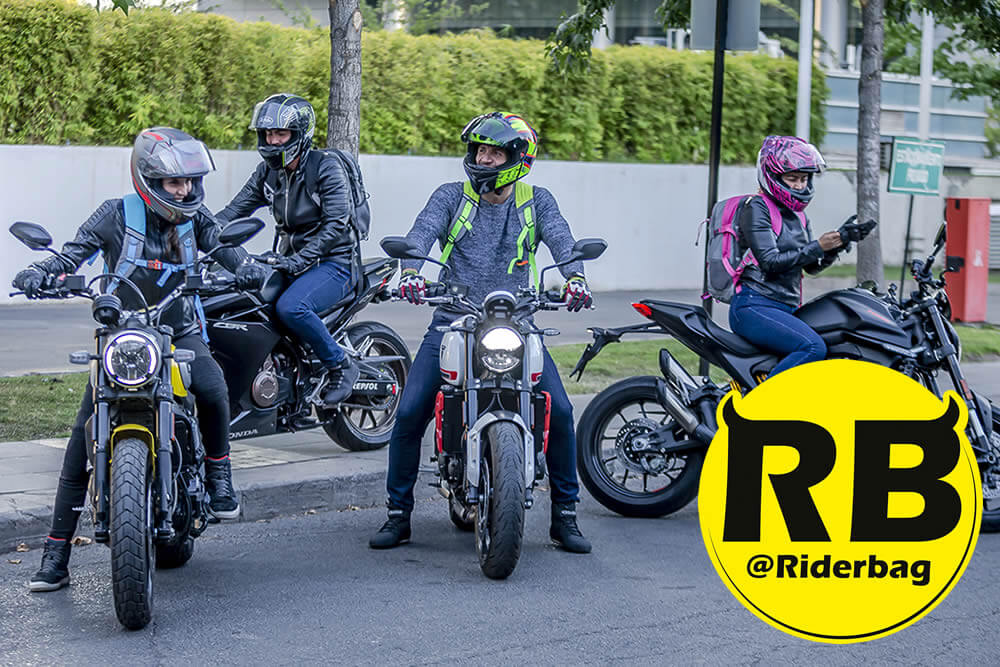Organize Your Gear: Tips for Packing Your Reflective Motorcycle Backpack

Organize Your Gear: Tips for Packing Your Reflective Motorcycle Backpack
If you’re commuting to work on two wheels, be it motorized or otherwise, carrying a backpack just comes with the territory. With that being said, one of the most common complaints we hear about riding with a backpack is that it’s unwieldy, uncomfortable, or just downright awkward to wear.
If those complaints sound a bit too familiar to you, we’ve got good news: All the above can be avoided by packing your reflective motorcycle backpack like the pros.
How To Organize Your Backpack According To The Experts
We know what you’re thinking: Who the hell would consider themselves an “expert” in packing a motorcycle backpack?
The short answer here is “absolutely no one,” but lucky for us, there’s another source of rock-solid expertise we can all lean on: long-distance backpackers.

Long-distance backpackers (also called thru-hikers) are those adventurous folks who spend four to six months a year hiking through the backcountry with heavy packs.
You’ve probably heard of the Pacific Crest Trail (2,600+ miles between Mexico and Canada) or the Appalachian Trail (2,200+ miles between Georgia and Maine), and we’d consider anyone who successfully walks the full distance of either to be an expert on the subject of packing and organizing a backpack.
So what do thru-hikers have to teach us riders? Turns out they all agree on five universal points for packing a backpack effectively.
Rule 1: Keep Heavy Stuff To The Inside
The first universal commandment of packing your reflective motorcycle backpack is that the heaviest stuff should be packed as close to the center of your back as possible. By securing heavier items closer to our bodies, we reduce the impact of rotational inertia and thus reduce any unwanted swinging around of our packs on our bodies.
A helpful way to visualize this is to think of two swings on a playground, one with a short chain and one with a long chain. As you’ll likely recall from your childhood, the swings on longer chains were more fun because they’d swing farther and faster, while the swings closer to the bar weren’t much fun at all.

When it comes to your backpack, however, you want the “shortest swing” you can possibly get, precisely because it’s less prone to swinging in the first place. The closer your heavy items are to your body, the shorter that swing becomes, and the more stable your pack becomes in turn.
In this example, things like your laptop and drinking water are common candidates for “heavier” goods, which is why you’ll always find both protective laptop pockets and hydration sleeves sewn into the back wall of your pack. This is also a smart place to stash heavy stuff like a change of shoes, a bike lock, or Black Sabbath albums.
Rule 2: Pack Lighter Stuff To The Outside
Following the same logic as point one above, you should also plan on packing your lighter stuff toward the outside of the pack further away from your body. The lighter the gear, the lower its mass, and thus the less susceptible it is to the forces of rotational inertia we described above.
Backpackers save these regions of their pack for things like sleeping bags, tent canopies, or puffy jackets, but two-wheeled commuters can apply the same principles to their packs. Every rider’s daily loadout is different, but this is typically the space we reserve for things like extra clothes, warm layers, or rain gear.

Keep in mind that the very bottom of your pack also counts as the “outside” in this example. Packing lighter/bulkier items in the bottom of your pack will help to suspend and support those heavier items we mentioned above, getting them closer to the center of your back and further stabilizing your load.
Rule 3: Stuff You Need Goes Up Top
While we hope you aren’t trying to reach into your pack while actively riding your bike, backpackers also recommend packing all your “quick access” essentials at the very top of the bag so they’re front and center when you need them. Typically this will be where you pack your “walking around town” go-to's like a wallet, a hat to cover your helmet hair, or a rain jacket in case of a pop-up shower.
We’ll also note that most reflective motorcycle backpacks worth buying include some form of a rain cover for the pack itself, which you’ll certainly want to stash somewhere handy. If your pack includes a second exterior pocket/compartment like ours, this is another smart place to stash it if the main compartment is full.
Rule 4: Use Those Compression Straps!
Pretty much all good motorcycle backpacks nowadays include compression straps. These are the adjustable nylon straps found on the exterior sides of the pack, which are typically fastened from the very back of the pack to the very front with a set of quick-release buckles.

As their name suggests, the purpose of these straps is to “compress” your load as tightly as possible once you’ve got everything packed into your bag. Start with these straps completely open, load your pack up, then crank them down until everything inside is nice and snug.
Doing this helps to “condense” everything inside your pack as close to your center of mass as possible. This is particularly helpful when your bag is less than full, as it eliminates the open spaces around your gear that would otherwise allow it to shift around during your ride.
Rule 5: Wear Your Pack Correctly
As any seasoned backpacker will tell you, even the most carefully packed and organized bag won’t do you much good if you don’t secure your backpack to your body properly. While the process of fitting a hiking pack is a bit more nuanced than your typical commuter bag, we can apply the same core principles here.
First, start by snugging down your reflective motorcycle backpack’s hip belt. A good backpack carries its weight predominantly on the hips rather than weighing down your shoulders, so this should always be the first strap you address. Drop the shoulder straps of your back down until your hip belt sits just below the crest of your hip bones, then pull it tight.

Next, you’ll want to snug up those shoulder straps. Our goal here is only to tighten the shoulders enough to pull the pack against our backs: Don’t overtighten them to the point that they pull your hip belt up above your hip bones.
Finally, with the bag secure on your hips and flush against your back, it’s time to snug down the sternum strap. Our goal here is to put just enough pressure on the sternum strap to remove any slack from the shoulder straps without actually pulling them closer together. Doing this correctly will prevent your shoulder straps from slipping further apart as you ride, which will further stabilize the pack on your body.
If your commuter backpack doesn’t include all the above, it might be time for an upgrade in the name of comfort and convenience. We may be a little biased here, but if you’re looking for the best reflective motorcycle backpack on the market, it's time to order a Riderbag.





Leave a comment